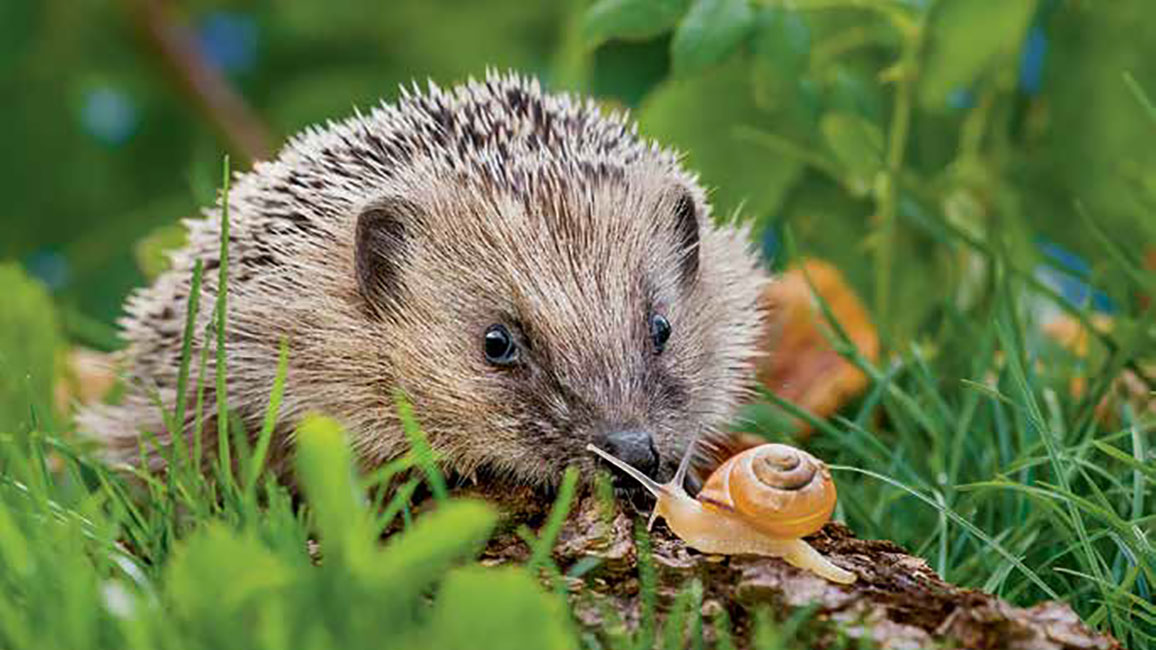
Hedgehog
By Hannah SchardtWith looks like these, you might expect a prickly personality to match. But throughout Western and Central Europe, where European hedgehogs live, people love the spiky critters. In fact, the hedgehog was recently voted Great Britain’s favorite animal. From its friendly face and waddling walk to the sniffly, snuffly sounds it makes, there are lots of reasons to flip for a hedgehog!
1. THEY’RE CUTE BUT TOUGH.
About 6,000 sharp spines cover a hedgehog’s head and back, each one half as long as a toothpick and just as sharp. The spines are made of keratin (KAIR-uh-tin), the same stuff that makes up your hair and nails. When a hedgehog spots a fox or other threat, it rolls into a prickly ball to protect its soft underside.
2. THEY HAVE FUNNY HABITS.
While it may not look the part, a hedgehog can swim like a pro. Holding its pointy nose above the surface, it can paddle easily across a pond or stream (above). Climbing out of the water is harder, so people sometimes put ramps in their ponds for easier exits. Back on dry land, when a hedgehog finds something that smells unfamiliar, it may lick the new object until the spit makes a foam. Then it takes a “bubble bath,” spreading the foam all over its body. No one’s sure just why.
3. THEIR BABIES ARE PRECIOUS—BUT PRICKLY.
Baby hedgehogs are called hoglets. At birth, hoglets are tiny, pink, and helpless, with their spines still mostly below the surface of their skin. (Lucky for the hedgehog moms that give birth to them!) But just hours later, their spikes emerge, leaving the hoglets looking like wriggly pincushions!
4. THEY MAKE GOOD NEIGHBORS.
Just as people like living near hedgehogs, hedgehogs like living near people. They use the hedges planted along farms and yards as “highways” to move from place to place, hiding out from predators under the leafy shrubs. In return for this protection, they help keep people’s gardens healthy by eating pests. Their favorite foods are millipedes and beetles, but they also snack on slugs and snails.
5. THEY NEED OUR HELP.
Farmers in some parts of Europe used to plant long rows of shrubs to divide their farms into smaller fields. Those hedges made perfect homes for hedgehogs. When farmers started growing bigger fields of a single crop, the hedges disappeared. So did many hedgehogs, especially in Great Britain.
Now many people want to help the ones that remain. So they are leaving parts of their gardens a little more “wild” to provide shelter for their prickly guests. They are also using fewer chemicals to kill the creepy-crawlies that hedgehogs eat. And when a little orphaned hoglet is discovered in a yard, chances are good there’s a nearby wildlife rescue group to give it loving care.
Wild hedgehogs don’t live in the United States. But you can give local wildlife a hand, too, by making sure your yard provides animals with food, water, shelter, and places to raise babies.



















